Enhancement Reclamation Becomes Crooked Creek Wildlife Sanctuary
BY Libby Pritchard and Sandy Lender
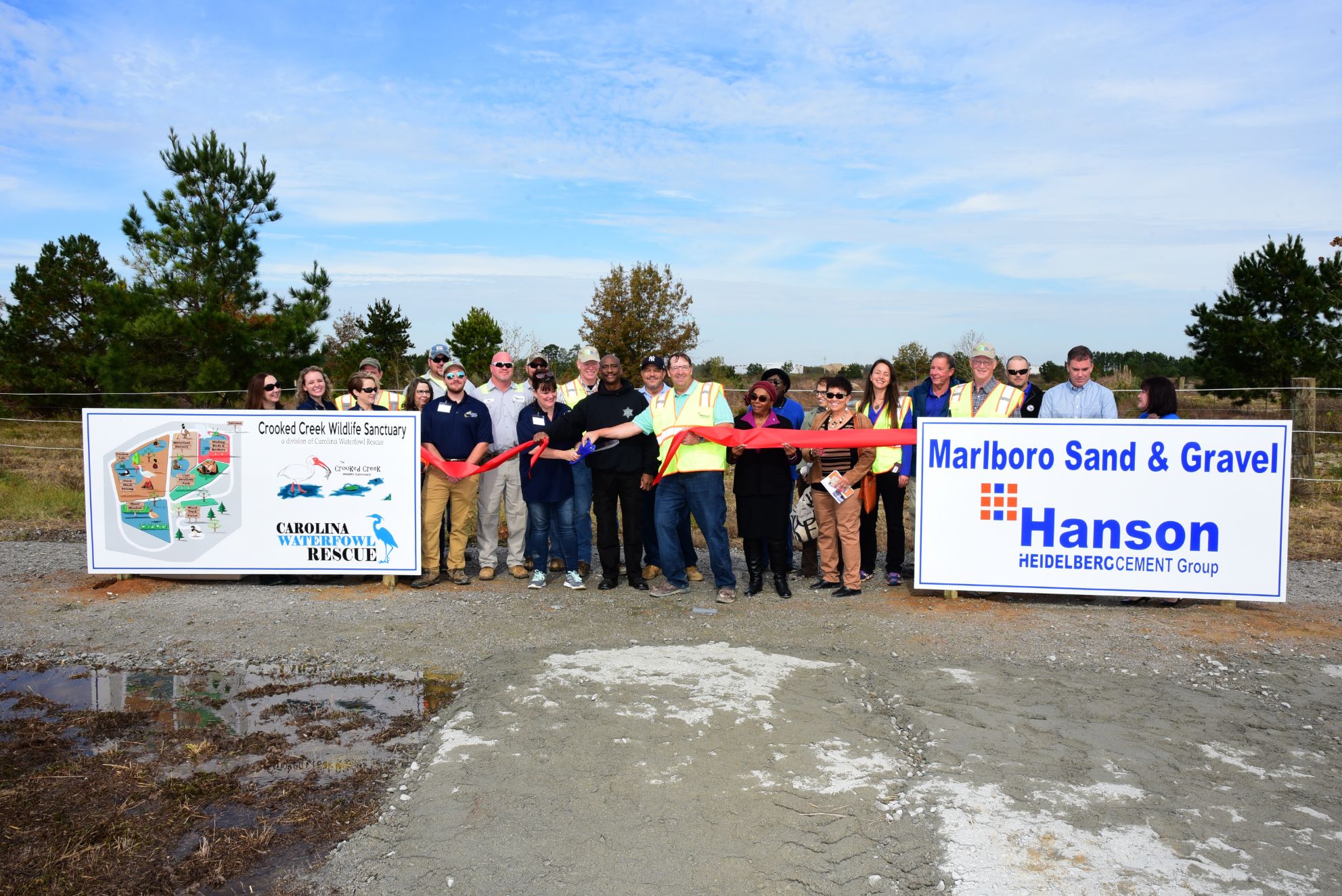
Cary Gordon, Lehigh Hanson’s Marlboro Sand and Gravel plant manager, Bennettsville, South Carolina, had his very own Obi-Wan Kenobi moment back in 2012 during a routine inspection of the plant’s 9,000 acres. It happened when he spotted a grove of magnolia trees in full bloom. As he approached the tree line, the realization dawned: that’s no bloom. What he thought were bright white magnolia flowers, were actually thousands of birds.
“I immediately thought, we need to share this with the public,” Gordon said. “My wife Jennifer is going to freak out!” Gordon’s wife, Jennifer, is the executive director of the Carolina Waterfowl Rescue (CWR), a non-profit organization that rescues, provides sanctuary for and rehabilitates wildlife. For some time, CWR had needed a place to rehabilitate waterfowl before birds could be released back into the wild, and the Lehigh Hanson property checked all the environmental boxes.
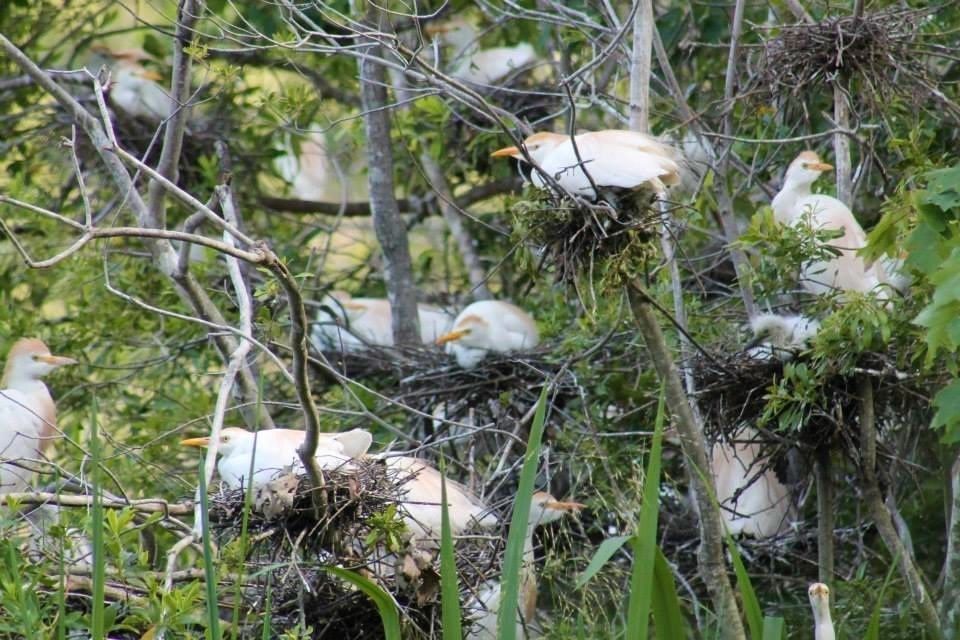
What Cary Gordon thought were bright white magnolia flowers, were actually thousands of birds.
There was just one problem: the company had sold that particular portion of land where Gordon spotted all the roosting waterfowl. But where there’s a will, there’s a way.
“It was just the right thing to do,” Gordon said. “So we decided to recreate it five miles away on our property and make it open to the public.”
The approximately 220 acres that Lehigh Hanson ultimately donated to CWR in 2018 was previously the “Airport Mine” at the Marlboro site, named for its proximity to the local Bennettsville airport. It had been mined until 2012 to a depth between 25-50 feet, making it suitable for this type of habitat enhancement reclamation.
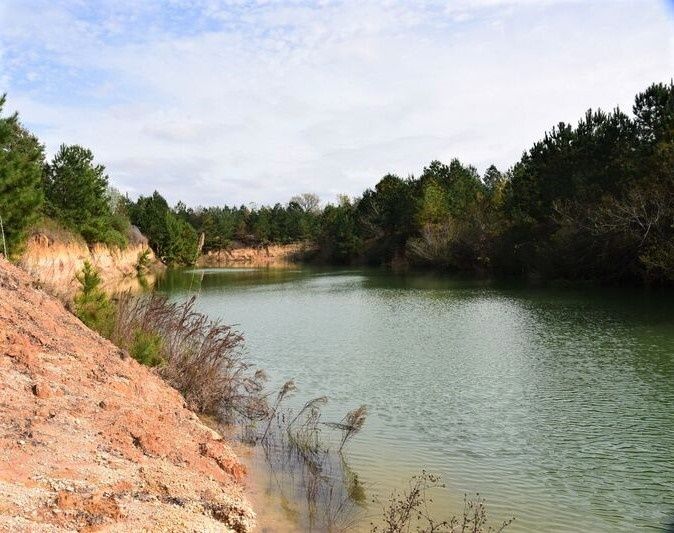
The completed land before and the rookery after show the great teamwork that took place.
“The project originated because the parcel naturally became a rookery,” Salley Lewis said. She’s the environmental project coordinator with Lehigh Hanson and she explained how Lehigh Hanson went above and beyond the letter of the law. “Per South Carolina Department of Health and Environmental Control (SCDHEC), all mines must be reclaimed to specific standards. Instead of the standard reclamation, Hanson wanted to do the right thing for Bennettsville. We had the tools and location to give back to the community. It was an opportunity for everybody to win.”
But there were many steps and players involved to take the Crooked Creek Wildlife Sanctuary from dream to reality.
First, it took support and buy-in from Lehigh Hanson’s leadership. “A lot of work fell to the plant manager [Cary], and the operations manager backed him all the way,” Lewis said. From there, the regional president visited the site, followed by the North American president. After months of the Marlboro plant’s determination and support from all levels of the company, the project started taking some physical shape—at least on paper.
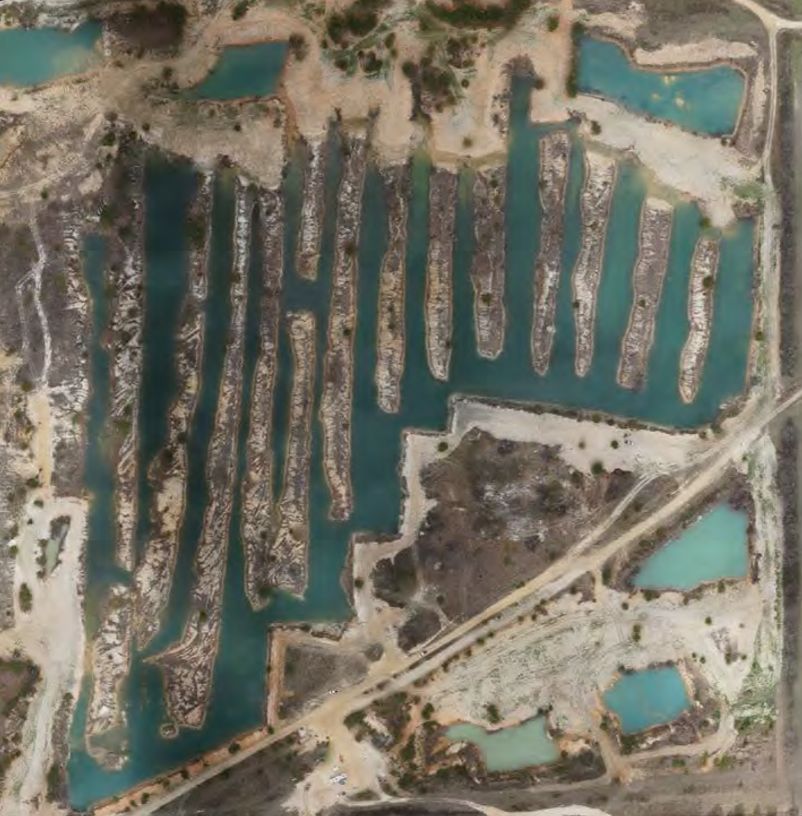
The completed land before and the rookery after show the great teamwork that took place.
The property had previously been mined using draglines, which left natural shallow finger ponds that support many native South Carolina species and islands that could be further enhanced to create ideal rookeries for nesting birds. Additionally, the existing inhabitants provided convenient protection for a rookery, as alligators kept predators like raccoons and foxes away. The combination of mining, established features and the natural setting became the foundation for what would become a frequently altered and detailed reclamation plan that had to be approved by the South Carolina DHEC.
“A lot of energy went into the design of every little spot, right down to the special wildlife fencing we used to let animals move fluidly through the area,” Gordon said. Various sections of the sanctuary also cater to certain species, like cliff swallows and bobwhite quail, which have been in significant decline since the 1980s, sparking a state-wide initiative to bring back quail populations. To support swallows, highwalls were preserved to become cliffs for them; for the bobwhites, the landscape was tailor-made to fit their habitat needs by minimizing trees to create fields where native seedlings, grasses, and berry bushes were planted.
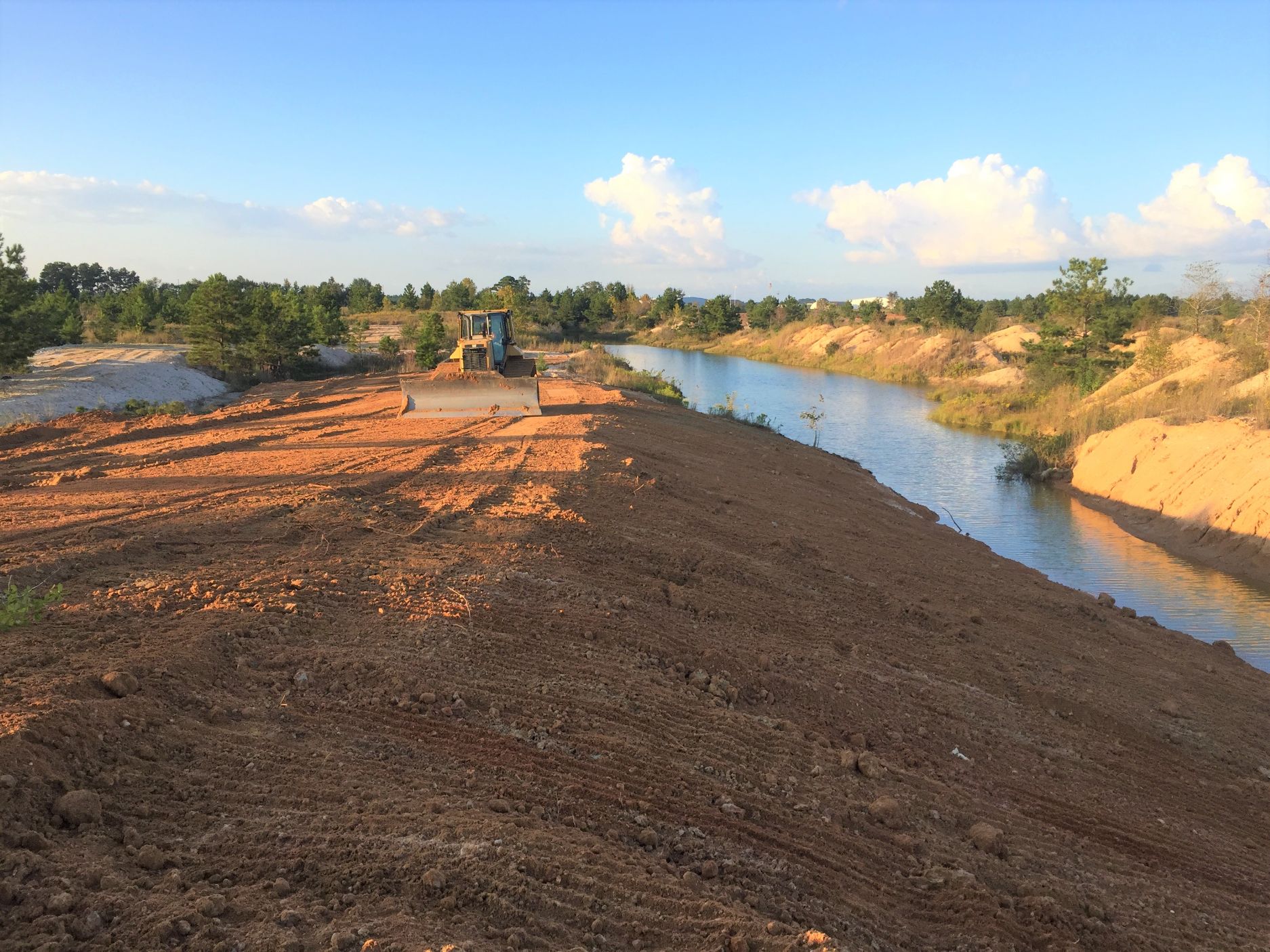
A motor grader smooths the habitat for Lehigh Hanson’s reclamation project.
Lewis shared that it took 9 to 10 months of non-stop work with dozers, excavators, long reaches (for the banks), haul trucks and mowers.
Regulatory agencies and habitat architects were some of the essential players from the community who energized and supported the project through its development. Another local partner was key. “Lehigh Hanson, CWR, and Duke Energy—who supplies Marlboro’s energy—all met and recognized the site’s potential for the community and the environment,” Gordon said.
Saddle Road Improvements Safely Connect Hawaiian Communities
Duke Energy holds annual grant competitions that benefit the local community in the areas of education, workforce, nature and more. When CWR applied seeking support for what would become the Crooked Creek Wildlife Sanctuary, the energy company quickly became a proud partner.
“Duke stepped up for the public,” Gordon said. “They were great partners.” Not only did they grant funds, but also additional energy during development of the site, and now the company hosts employee volunteer days at the sanctuary.
Specifically, “Duke Energy awarded the project a grant for $50,000 to be used for wildlife enhancement,” Lewis shared. “The grant was used to stock the ponds for the migratory waterfowl, build kiosks for visitors, creation of bob-white habitat, and waterfowl habitat planting.”
The story of Airport Mine’s transformation from aggregate mine to environmental gem is one of perseverance, but also one of commitment to community. Today the site provides hiking, kayaking, field trips for Boy Scout troops, and bird watching to the public, with hopes of future equestrian trails and even another 200 acres of habitat that will focus on reptiles.
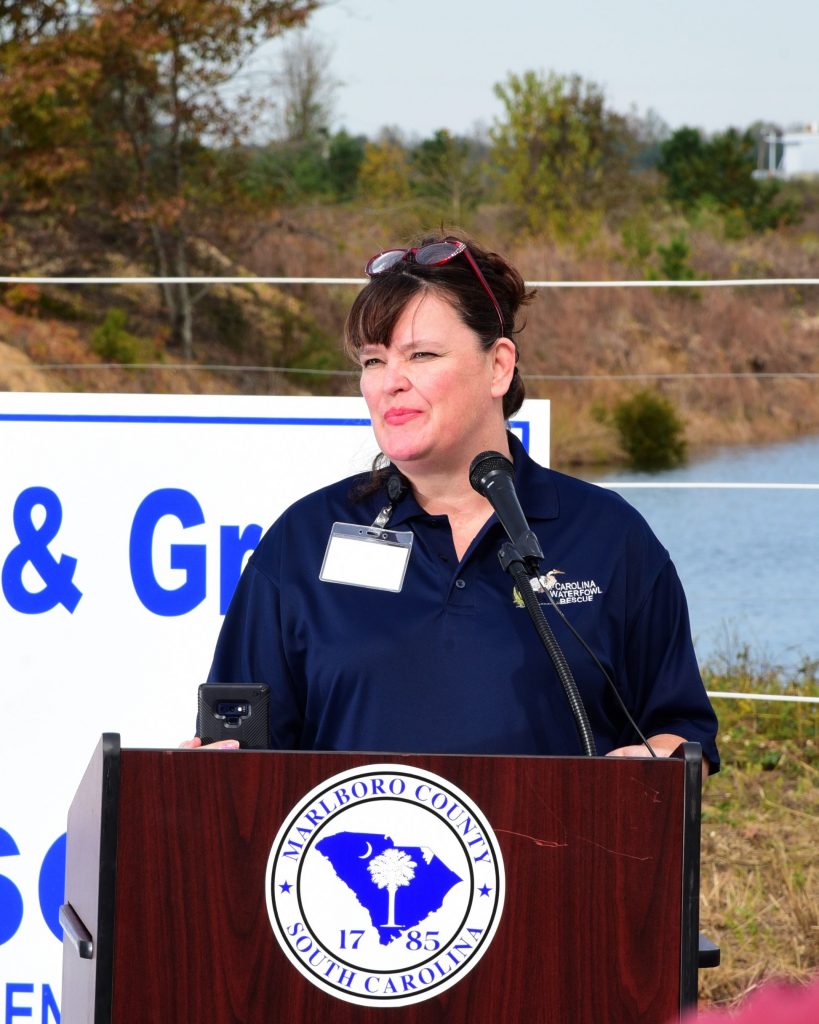
Jennifer Gordon is the executive director of the Carolina Waterfowl Rescue (CWR), a non-profit organization that rescues, provides sanctuary for and rehabilitates wildlife, and spoke at the opening of the Crooked Creek Wildlife Sanctuary.
The Crooked Creek Wildlife Sanctuary is a gift to the community and one that the community came together to support. “It isn’t for Hanson. It’s for the people. Marlboro County has been a great partner and we need to show we’re there for them,” Gordon said.
It’s clear through this project that the community is also there for Hanson.
“It took so much cooperation for this project to happen. There was DHEC, the South Carolina Wildlife Foundation, Pee Dee Land Trust, Duke Energy…it took buy-in from all parties,” Lewis said.
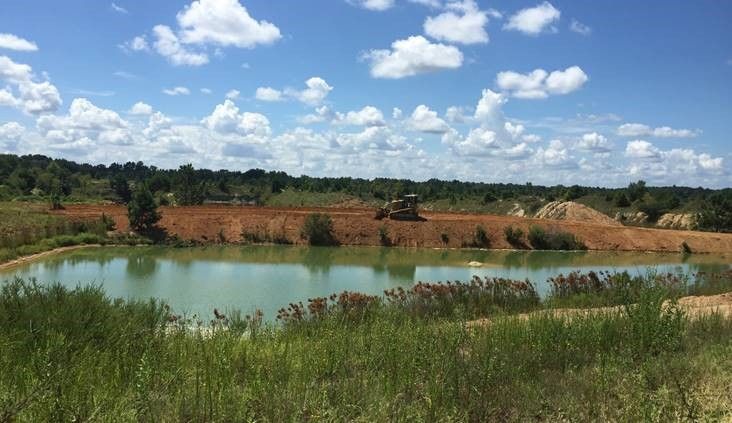
A skid steer blades ground for the Lehigh Hanson reclamation project.
Not every mine or quarry in North America can turn completed land into a rookery, but other reclamation efforts are possible. Lewis shared this valuable advice:
“The first step is to identify the needs of the area—both the animals and the communities. You want the project to reward not only the environment but the residents in the area. Which animals in the area need assistance? What do the different animals need? Safe breeding grounds, etc..?
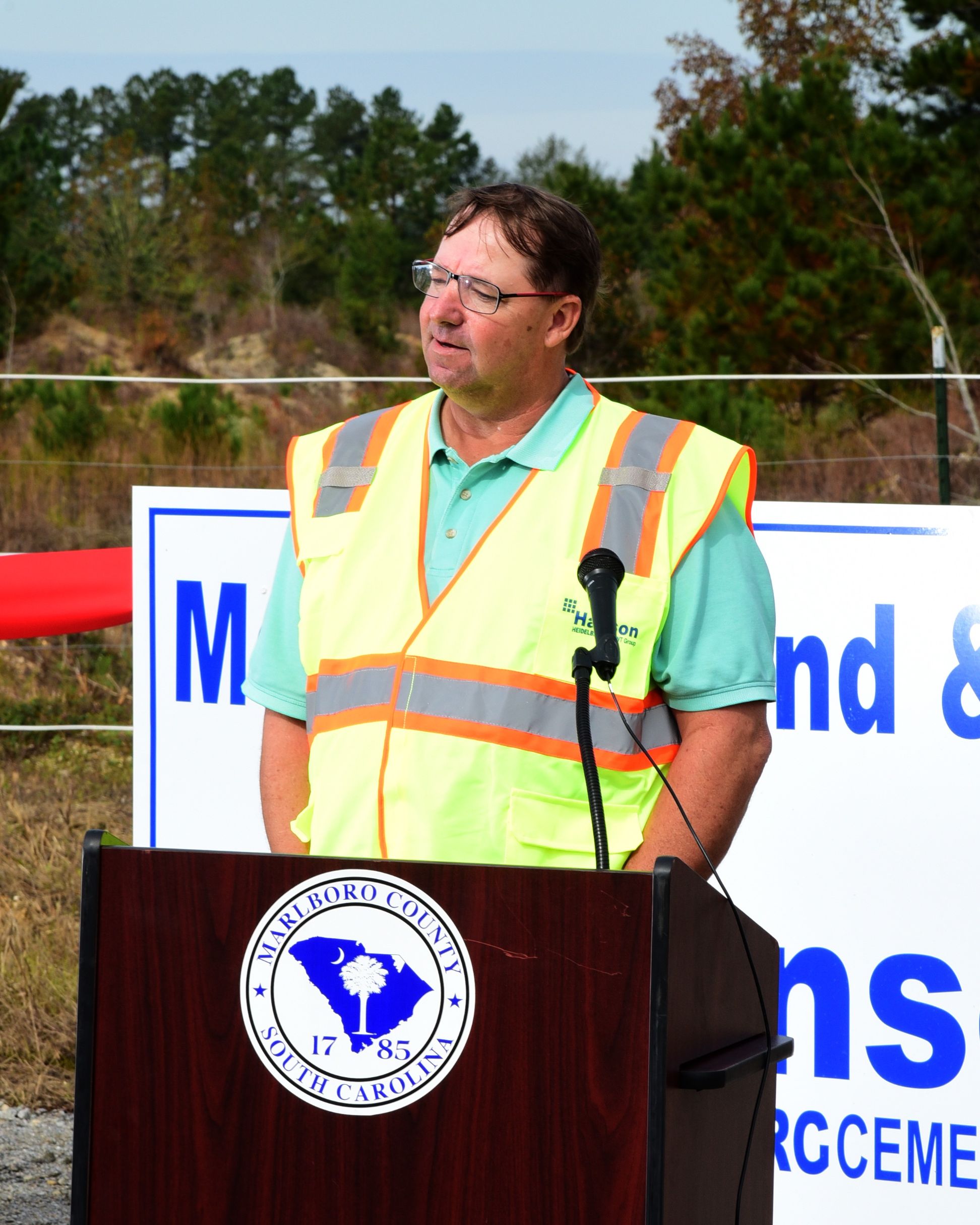
Cary Gordon, Lehigh Hanson’s Marlboro Sand and Gravel plant manager, spoke at the opening of the Crooked Creek Wildlife Sanctuary.
“The next step is come up with a project that meets regulatory reclamation requirements and the needs for wildlife habitat. If another company wanted to do a similar project, I would suggest teaming up with a foundation such as a Carolina Waterfowl as we did. This helps promote the benefits to the community/environment to the state and federal regulators, which helps with permitting. Additionally, the foundation will be the owner of the newly created habitat where it can be maintained and used to benefit the community.”
The CWR rookery’s success all started with a champion—a plant manager—driving through a field, who recognized, “When these things come together, you need to take advantage.” The force was strong in Cary Gordon that day to see the opportunity to better his community and to seize it.
His is a shining example of the positive impact our industry can and does make on our communities.
The original story was published in volume 36 number 4 of the Stone, Sand & Gravel REVIEW a bimonthly publication of the National Stone, Sand & Gravel Association. Libby Pritchard is the NSSGA director of Construction Materials Safety Policy. Additional information appears courtesy of Salley Lewis and Cary Gordon of Lehigh Hanson.
